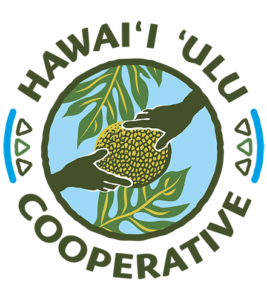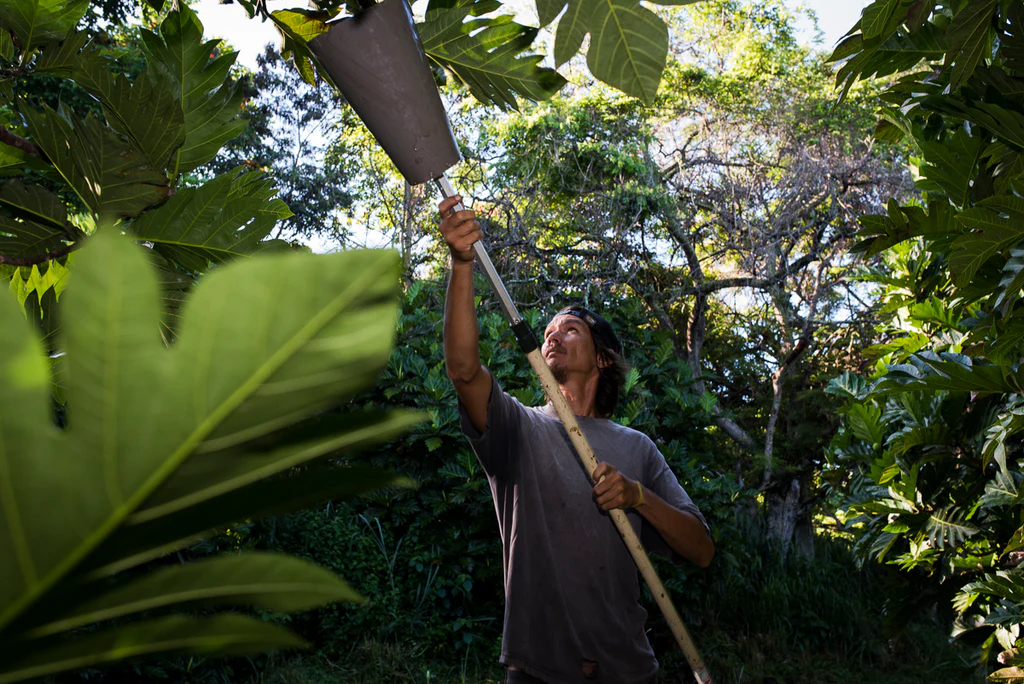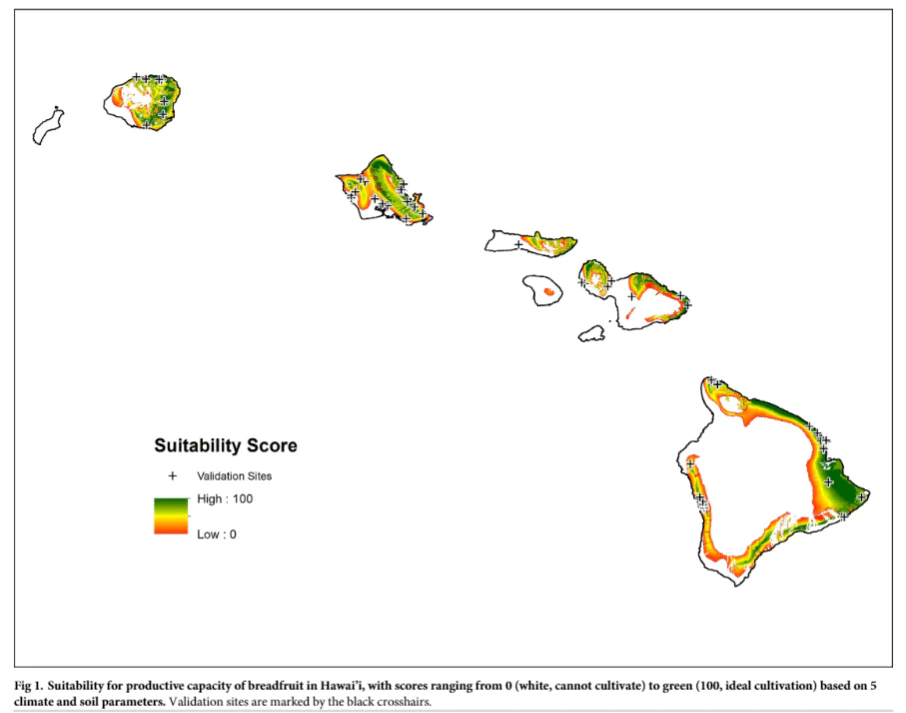Cultivation Potential of Breadfruit in Hawaiʻi
Are you curious how ʻulu might grow at your location – either now or in the future? With climate change affecting global weather patterns, understanding the habitat suitability of ʻulu and how itʻs expected to change over time can be a helpful tool to plan production at the farm or regional level, thereby strengthening food system resilience!
Researchers at the University of Hawaiʻi at Mānoa – including co-op members Kailsi Mausio and Dr. Noa Lincoln – recently studied this topic and published their findings in the paper: “Cultivation potential projections of breadfruit under climate change scenarios using an empirically validated suitability model calibrated in Hawaiʻi” (Mausio et al. 2020).
Importantly, the authors find that there is substantial potential for current and future breadfruit production in Hawaiʻi and globally despite a changing climate – which is not the case for many conventional staple crops, which are expected to decline in suitability under projected future climate scenarios.
Increasing demand for food and nutrition due to rising population growth in coming years presents significant challenges for the future of food production and food security. Micronutrient malnutrition currently affects around 2 billion people, most of them located in the tropics and subtropics. As an underutilized, high yielding, and culturally relevant tree crop in Hawaiʻi, ʻulu has significant potential to support increased food security, especially as it requires relatively low input and maintenance.
Summary of Findings:
What habitat does ʻulu like?
In conducting this study, the authors first refined the habitat suitability model for ʻulu using existing published data combined with extensive tree mapping of demonstrated naturalized trees in Hawaiʻi and corroborated observations from other parts of the Pacific. This work resulted in a broader suitability span than previously thought, especially with regard to rainfall and soil drainage. A table showing absolute and optimal minimum and maximum parameters across 5 parameters are shown in the table below.
Where in Hawaiʻi does ʻulu grow?
Following refinement of the suitability parameters, the authors generated a map of Hawaiʻi showing current breadfruit suitability on a scale from 0 (not suitable) to 100 (optimal suitability), illustrated in the graphic below. The effects of Hawai’i’s substantial gradients in temperature and rainfall are clearly visible, with greater breadfruit production potential generally on the wetter windward (northeastern) sides of the islands and near the warmer coasts. The textured breaks in the model represent soil parameters driven by different aged lava flows on the younger (southern) islands and valley topography on the older (northern) islands. Leveraging the diversity across the archipelago, mode validation was conducted using sites located on five islands with considerable differentiation in both actual productivity and modeled suitability.
What does the future hold?
Future breadfruit suitability was assessed using several future climate model scenarios. Results demonstrate an increase in total cultivable land for ʻulu of between 27% and 89%, as well as an increase in average suitability between 14% and 45%. While there were decreases in some cultivable areas of Central and South America, marked gains were seen in Southeast Asia and southeastern parts of the United States and South America. Overall, currently productive areas remain largely unchanged, accounting for 43% of the modeled area, and another 30% of the modeled area shows minimal change of +/- 10%.
Conclusions
In summary, this study shows most current breadfruit producing regions of Hawaiʻi and globally are not expected to be negatively affected by climate change, providing some security and stability in the face of uncertainty. Importantly, the authors note that geographic areas with suitability scores of 30 and below represented very poor producing trees, with the plants growing and bearing fruit but only on the order of 10% of what trees in very high suitability habitats are able to produce.
This study highlights the great potential opportunity of breadfruit as a highly resilient tree crop which is suitable for large-scale investment as well as for incorporation into climate adaptation and regional land use planning. The authors also suggest that other underutilized crops should be identified and nurtured, as they may also flourish under future climate conditions and even grow synergistically alongside breadfruit.
With many current staple crops expected to decline in productivity as a result of predicted climate change, the increased cultivation potential for underutilized crops such as breadfruit, a nutrient-dense, long-term food staple crop, will have a positive impact on future food security.



